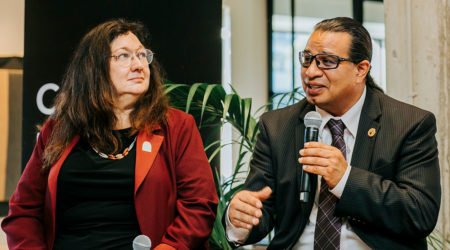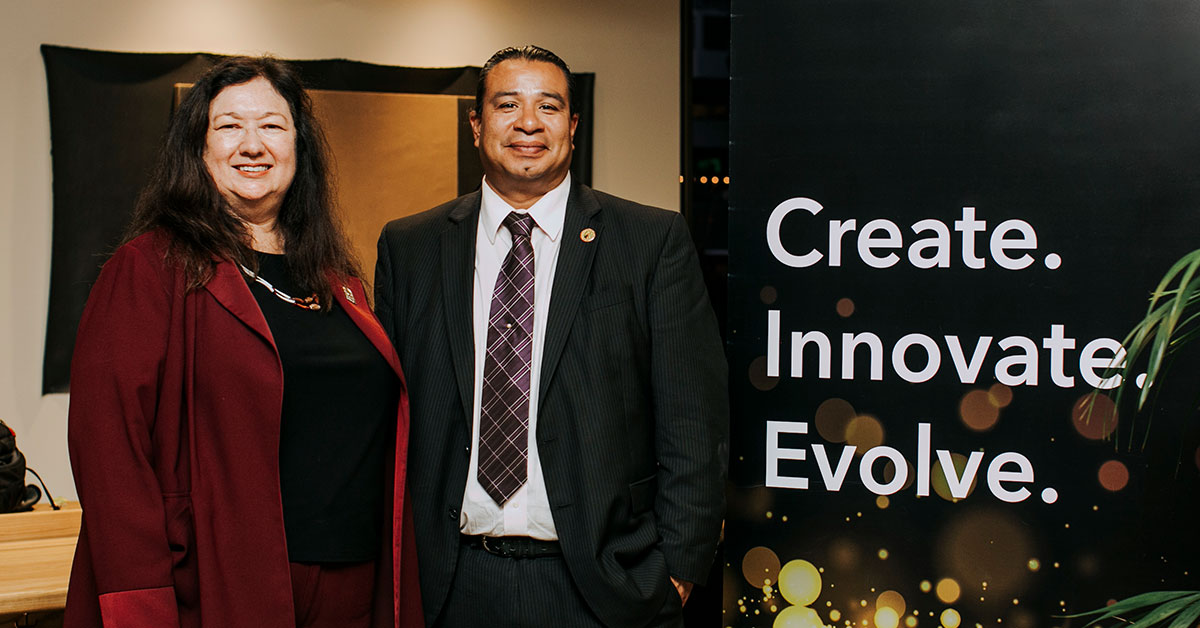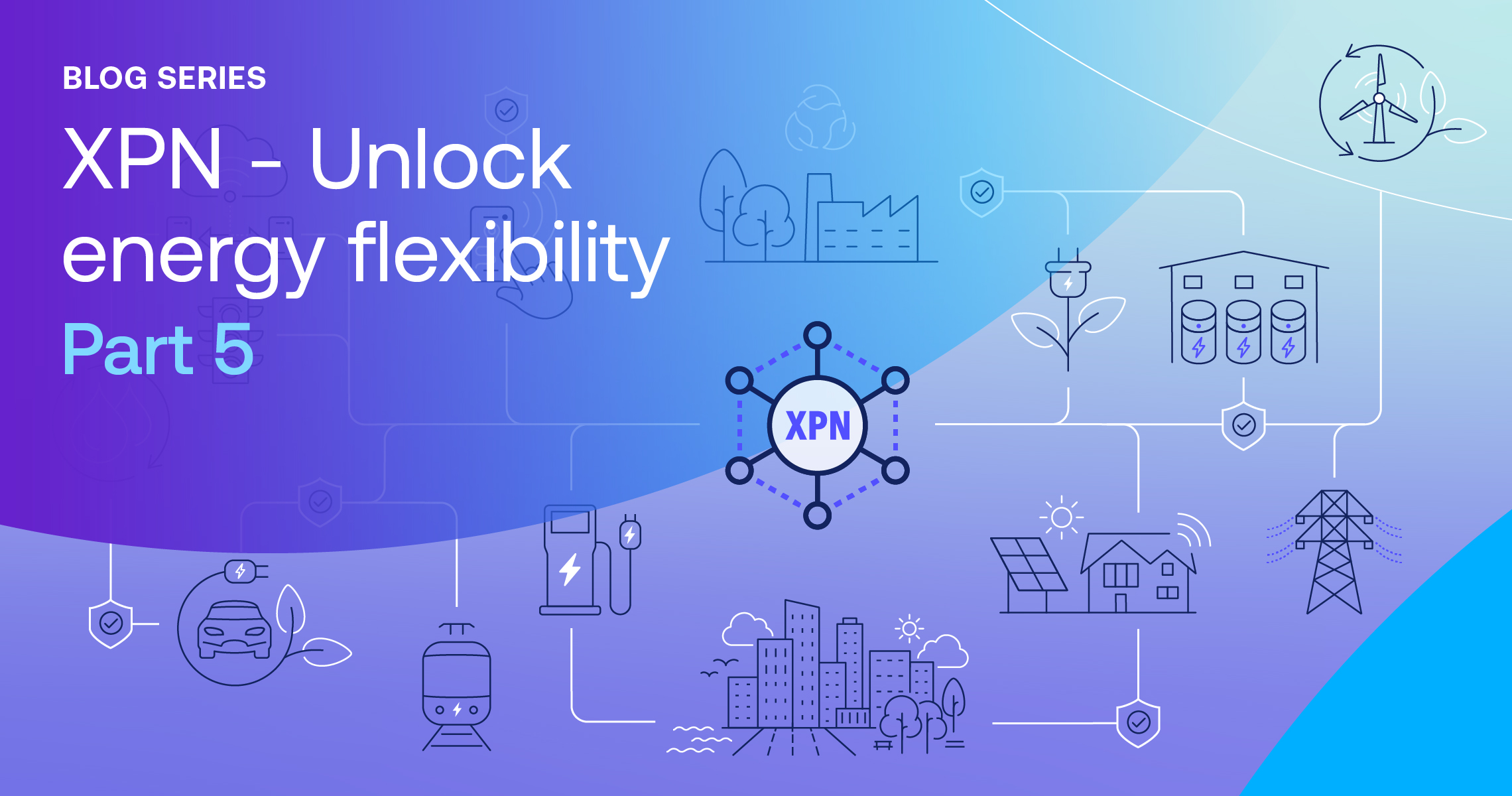From left to right:
Catherine Sandoval – Associate Professor of Law, Santa Clara University and former Commissioner at the California Public Utilities Commission
Javier Kinney – Executive Director with the Yurok Tribe
As part of our energy series of talks, it was our pleasure to hear presentations from two distinguished speakers, Catherine Sandoval, Associate Professor of Law and a former Commissioner with the California Public Utilities Commission and Javier Kinney, Executive Director with the Yurok Tribe, on a very different energy related issue. The talk entitled “Closing the Native American Reservation Electricity Gap; The Yurok Tribe’s Trailblazing Leadership to Provide Energy Access and Energy Justice,” detailed how in 2019, just a few hundred miles north of Silicon Valley there is a population without access to a steady source of electricity.
 According to Sandoval, the Yurok Tribe is the largest Native American tribe of the 109 Federally recognized tribes in California with around 6500 citizens. What is shocking is while California is the world’s fifth-largest economy and is in the midst of moving towards a goal of 100% renewable energy by 2045, the Yurok Tribe still has around 200 families who lack access to the electric grid. Until 2018, this also included the reservation’s elementary school which had been powered by diesel generators.
According to Sandoval, the Yurok Tribe is the largest Native American tribe of the 109 Federally recognized tribes in California with around 6500 citizens. What is shocking is while California is the world’s fifth-largest economy and is in the midst of moving towards a goal of 100% renewable energy by 2045, the Yurok Tribe still has around 200 families who lack access to the electric grid. Until 2018, this also included the reservation’s elementary school which had been powered by diesel generators.
While for many the first thought might be the inconvenience of everyday life without electricity, Kinney emphasized its adverse effect on success in today’s technology-driven world. A lack of electricity is a basic barrier preventing students from learning coding or using the Internet for education, as is increasingly being required by the State of California. Still, Kinney emphasized the Yurok Tribe is looking beyond using electricity to just catch up with society. “In addition to our natural resources, we are looking for the opportunity to succeed. ….. We want to be the innovators that drive the technology,” (Kinney).Sandoval cited a number of factors behind the Yurok Tribe’s predicament. Essentially, it breaks down to several factors: legal issues, discrimination, history, funding, and geographical factors. Like all Native American tribes, the Yurok Tribe is a sovereign entity federated with the U.S. Federal Government. There is actually no Federal law requiring access to electricity – or telecom, water, or other types of public infrastructure – for Native Americans. Sovereignty can also complicate relationships with the California State government who regulates the electrical distribution grid.
History and discrimination go together. The Yurok Reservation was first created by forced relocation. Electrification has been hampered by what Sandoval refers to as “bureaucratic erasure.” One of the more egregious examples of this was a proposal in the 1950’s to build what was called the Ah Pah dam on the Klamath River. While this would have have flooded parts of the Yurok Tribe’s most sacred lands as well as lands of the Hoopa and other tribes, according to Sandoval, the report recommending the dam never mentions the words “tribe,” “Indian,” or “Native American.” While the dam ultimately was never built, the proposal lead to a perception that building any infrastructure would be fruitless since the land would be inundated anyway.
Funding, of course, has always been an issue. Funding from the Federal government tends to be both low and intermittent. PG&E, the utility serving the Yurok Reservation never really responded to requests for grid connections, but was willing to provide power for a sawmill in the area. Electrification policy is now governed by what is called “causer pay,” i.e. the entity requesting a grid connection has to pay. Costs start at $40,000 a mile and can go as high as $150,000 a mile, which are hard numbers to make for a population whose average household income is $20,000 a year.
With the rapid decrease in costs of both solar panels and batteries, one solution would seem to be to equip homes with solar power and batteries. This is where the geography of the Yurok Reservation makes things difficult. The area is near the Pacific Ocean coast and is often socked in by fog or smoke from fires. It also tends towards heavily forested slopes, a fact that not only stymies the construction of distribution lines, but also limits solar production as well. As a result, solar production can often be limited to just one to three hours a day.
Kinney made it clear that the Yurok Tribe is interested in working with the technology community to help find solutions. However, while much innovation is happening in the electricity generation area, Sandoval emphasized that the Yuroks are really facing an issue of distribution. Some of the solutions the tribe is looking into are microgrids or Vehicle to Home (V2H) technologies. V2H technologies allow the batteries of plug-in vehicles to also power homes (an example can be found here). The Yurok Tribe owns a gas station so there are plans to install EV chargers that could be used for this purpose. There is also interest in using electric boats as well.
Sandoval notes that the tribe is looking for “innovative ideas that are sustainable for the future generations.” She also pointed out that the Yurok Tribe is not alone in lacking access to the grid, it’s also a problem across Native American reservations. In fact, it’s a major problem across the world. According to a number of sources gathered by Statista, in 2017 in India alone nearly a billion people lacked access to electricity. As the world moves to a decarbonized energy system, bringing energy to underserved populations is an issue that should also be solved. For Silicon Valley, working with an area in our backyard could be a good place to start.
For more information, see Catherine Sandoval’s presentation here.
Innovator Series
The Innovator Series, brought to you by Intertrust Technologies, serves the local Bay Area tech community. These thought-provoking conversations inspire the future of tech while empowering our collective community to engage with one another in an open forum.
About Phil Keys
Phil Keys is a Director, Comms & Research for Intertrust Technologies. He is a veteran technology industry observer, marketer, connector, and writer based in Silicon Valley. In addition to 13 years of experience as a Silicon Valley Correspondent for Nikkei Business Publications, Phil has worked for technology companies in both the US and Japan. Phil has spoken publicly in events in Tokyo and Silicon Valley as well as moderated panels in Silicon Valley. He holds a B.A. from the University of California at Berkeley and attended International Christian University in Tokyo.




